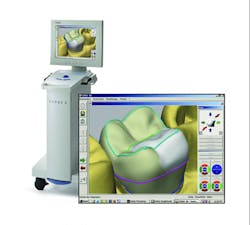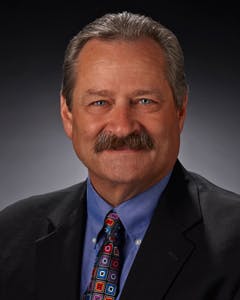When I returned from the Chicago Midwinter meetings, and specifically the AED and the AAFP, it became obvious to me that there is a lack of understanding about the processes or workflow in digital dentistry. I thought it would be worth some time to explain some of these processes so that an educated decision can be made moving forward.
ALSO FROM CRAIG PICKETT:5 steps to fabricating crown and bridge models
There are four general pieces of the puzzle
• First is, what materials do I want for restorations? No system should be considered without answering this question.
• The second piece is the information capture. This can be done with an intraoral scan (IOS), or traditional impression with a laboratory scanner. Laboratory scanners are capable of capturing information directly from an impression or from the cast poured from the impression.
• The third piece is the design software or “design seat” (CAD). This allows the operator to take the digital information captured by the scanners, create a model of the patient, and then design the restoration to fit that model. This software comes in several forms and is often referred to as “modules,” which are combined to achieve the breadth of the design needs.
• Fourth is the manufacturing process. This can be milling (wet or dry) or printing of materials. This process will require separate software (CAM) that will give the machine a tool path or print path to create the restoration.
When all of these pieces are placed together, the digital path will look like this
The dentist will prepare the oral surface for a restoration. The dentist will then capture the information of the preparation via intraoral scan or traditional impression technique. (This brings up a question that has not been explored. If the dentist is required in nearly all states by the respective Dental Practice Acts to take the final impression, [not just review the final impression] is the intraoral scan the final impression? If so, is it legal for a dental assistant to take that scan?)
CONSIDER READING:Disease prevention a key part of health care
The intraoral scanned digital information will now be sent to the design seat via email, thumb drive, or network, or the traditional impression will be scanned, or a cast poured and then scanned by a laboratory scanner. Using the design software (CAD), the technician, doctor, or assistant will design the restoration, which will then be sent in digital form to the manufacturing process machines (mill or printer). At the end of the manufacturing process the technician, doctor, or assistant will complete the necessary processes for the material being used in the restoration (polishing, staining, and glazing). The restoration is then delivered to the patient.
Because there are so many systems on the market, it’s wise to understand that like articulators, not all systems are interchangeable. Closed systems require you to use only pieces from their process in their system only. This may also include restorative materials. Most open systems allow transfer of information between the capture, design, and manufacturing processes. Generally this is accomplished by the use of an STL file. Open systems will take this file type and convert it into the file type used for their process, or they will convert from their specific process file into an STL file.
Some digital companies will use a “reduction or elimination of your lab bill” statement as an enticement for their systems. Please remember that if you bring this technology into your dental office, you are simply transferring your lab costs into your office costs. You will have the cost of training and equipment, software (sales or annual fees), updates, time of your assistant, materials, and of course, there are no free remakes. So do your due diligence before you invest in all or part of a system.
Software is a proprietary item based on the intellectual property of the creator. The use of this information is restricted by what is referred to as a “dongle.” A dongle is a key or switch that unlocks the ability of the software. The fees associated with this information are not inexpensive and often require annual renewal.
Technology changes rapidly, so you should plan on an ROI of two to three years or less. Materials you want to use in your in-house system may require other pieces of process equipment, for example, a porcelain furnace or sintering oven. Be sure to factor in these additions.
A common thought now is that the dentist will purchase a complete in-house system or the IOS, and then send the digital information out for the processing of the restoration. There is also the idea that the dentist will capture the information, and then send it to a design center (lab) who reviews the digital information, designs the crown, and returns it to the in-office mill or printer for manufacture and finish.
Any of the three business models are acceptable as long as your practice can support them. Check with your current dental laboratories before you acquire a system. See if they support the process you want to use. If not, see if they would be willing to invest in digital to meet your needs before you jump to another provider. Since communication is an essential part of any doctor/laboratory relationship, it is often best not to have to redevelop that relationship!
Lastly as you consider your options please remember that laboratories are becoming fewer and fewer, and with that change fewer and fewer ceramists are being trained. That said, the traditional hand-stacked feldspathic ceramics will become more expensive and harder to come by as the talent it takes to correctly construct them diminishes. Digital dentistry is quickly becoming dentistry, so now is the time to look carefully at your options and plan for your future.
Craig A. Pickett, AA, RG, CDT, TE, NBC certified in crown and bridge with technologist designation, is a recognized graduate of Diablo Valley College in Dental Technology, and attended Brigham Young University in predental. Prior to his position as Dental Technical Support Manager at Whip Mix Corporation, he managed in large and small crown and bridge /ceramic laboratories, owned Pickett Fabrication in Vacaville, Calif., and represented J.F. Jelenko & Co., Whaledent, and Dentsply as a Technical Sales Representative. As a 30-year CDT with over 35 years of C&B, ceramics, and industry experience, Pickett is now responsible for technical support to optimize product performance for customers. He assists in developing and evaluating new products and represents Whip Mix by presenting technical clinics in the U.S. and internationally. He is the recipient of the 2014 NADL Excellence in Education Award.Learn more about Craig on LinkedIn.







